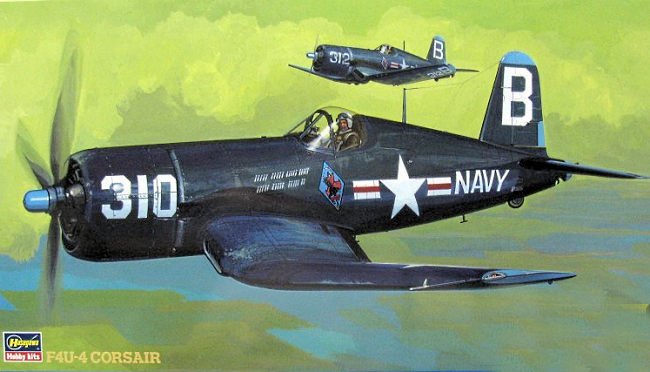Description
The F4U-4 is the ultimate WWII variant of the Corsair. The -4 introduced a more powerful engine, this time driving a four-bladed prop. It still had many of the same basic airframe parts as the earlier versions, but several of those were beefed up so that the Corsair could handle more ordnance. By the time the -4 entered service during the last year of the war, it was pretty obvious that the days of the specialized naval bomber were numbered. The Corsair was able to carry a heavier payload than the SB2C Helldiver and it did not need the extra crewman. Additionally, it was much faster and if it had to defend itself, it was more than a match for most of the adversaries it had to meet. The Marines loved the bird. It could carry a wide variety of ordnance, was fast, was rugged, and able to operate with ease from either rough strips or aircraft carriers.
Despite the wholesale canceling of contracts that occurred at the end of World War II, the Corsair was one of the few still kept in production, albeit at a much reduced rate. The final -4 rolled off the assembly line in mid 1947, only to be supplanted by even more updated versions. When the Korean War broke out in mid-1950, there were still plenty of F4U-4s in fleet service. They continued to be used with much success in the ground attack mission until the end of the war. Jets may be faster, but the Corsair could carry a respectable load and hang around to suppress enemy troops.
After seeing military service, a number of Corsairs joined the Air Racing circuit and decades later became the prize possessions of a few lucky warbird operators. The last military use of the Corsair was during the ‘Soccer War’ of 1969 between Honduras and El Salvador. Both countries operated the Corsair against each other, with those of Honduras being credited with a few air to air victories.
49 Parts
Wingspan258mm
Length 202mm
Paint and glue required



